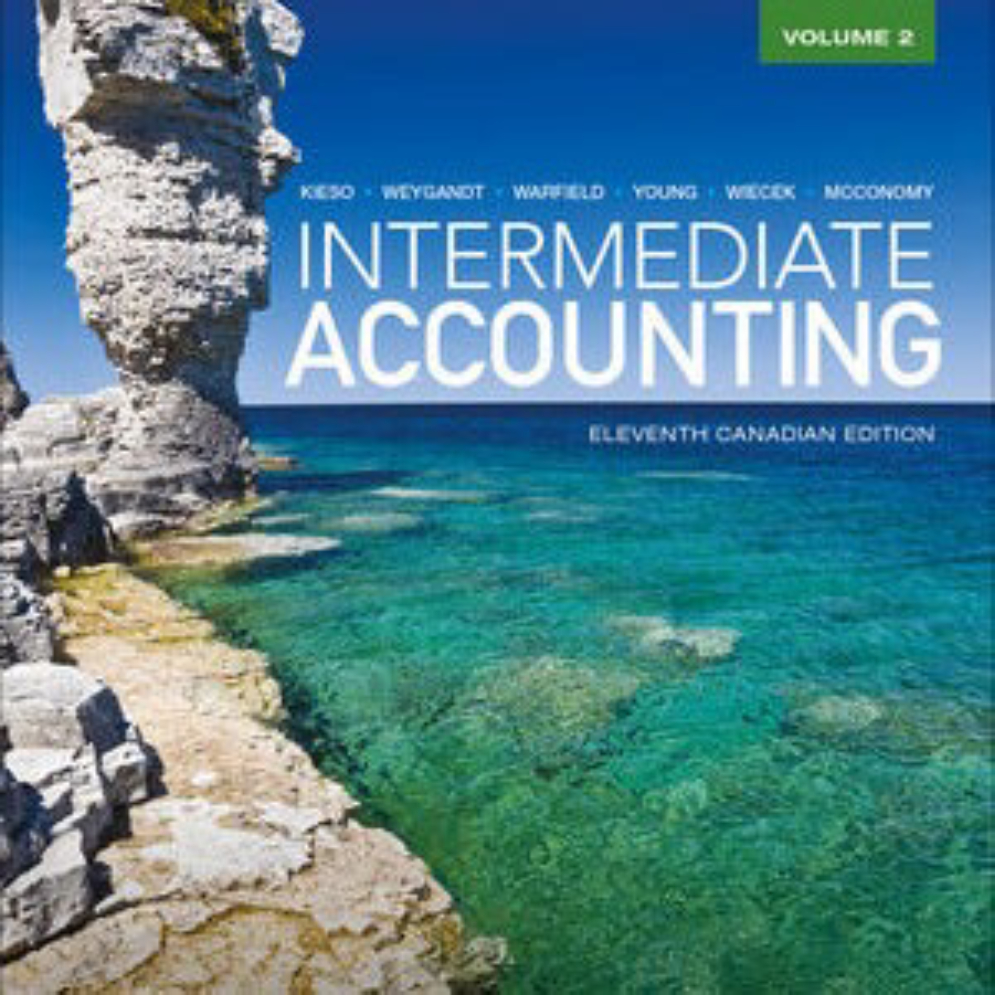Intermediate Accounting Volume 1, 11th Canadian Edition by Bruce J. McConomy_ Donald E. Kieso – Test Bank
CHAPTER 11
DEPRECIATION, IMPAIRMENT, AND DISPOSITION
CHAPTER STUDY OBJECTIVES
- Understand the importance of depreciation, impairment, and disposition from a business perspective. The economic benefits of property, plant, and equipment are typically consumed as the items are used by the organization. Because the benefits are consumed over multiple periods, companies use depreciation to allocate the benefits of the PP&E to each period as the capacity of the assets is used up. By allocating the cost of property, plant, and equipment over its useful life, businesses are better able to match the costs and benefits of the assets to the revenues that they help generate. Companies also need to assess their PP&E each year under IFRS for indications of impairment, and if these indications are present, they should re-estimate how much will be recoverable. Following GAAP should also help companies better understand their business.
- 2. Explain the concept of depreciation and identify the factors to consider when determining depreciation charges. Depreciation is the process of allocating the cost of property, plant, and equipment assets in a systematic and rational manner to the periods that are expected to benefit from their use. The allocation of the cost of intangible capital assets is termed “amortization” and the allocation of the costs of mineral resource assets is termed “depletion.” Four factors involved in determining depreciation expense are (1) the recognition of the appropriate asset components, (2) the amount to be depreciated (depreciable amount), (3) the estimated useful life, and (4) the pattern and method of depreciation.
- Identify how depreciation methods are selected; calculate and recognize depreciation using the straight-line, decreasing charge, and activity methods. The depreciation method chosen should amortize an asset in a pattern and at a rate that corresponds to the benefits received from that asset. The choice often involves the use of professional judgement. Tax reporting, simplicity, perceived economic consequences, and impact on ratios are examples of factors that influence such judgements in practice.
The straight-line method assumes that an asset provides its benefits as a function of time. As such, cost less residual value is divided by the useful life to determine the depreciation expense per period. The decreasing charge method provides for a higher depreciation charge in the early years and lower charges in later periods. For this method, a constant rate (such as double the straight-line rate) is multiplied by the net book value (cost less accumulated depreciation and accumulated impairment losses) at the start of the period to determine each period’s expense. The main justification for this approach is that the asset provides more benefits in the earlier periods. The activity method assumes that the benefits provided by the asset are a function of use instead of the passage of time. The asset’s life is considered in terms of either the output that it provides or an input measure, such as the number of hours it works. The depreciation charge per unit of activity (depreciable amount divided by estimated total units of output or input) is calculated and multiplied by the units of activity produced or consumed in a period to determine the depreciation.
- 4. Explain the accounting issues for depletion of mineral resources. After the depletion base has been established through accounting decisions related to the acquisition, exploration and evaluation, development, and restoration obligations associated with mineral resources, these costs are allocated to the natural resources that are removed. Depletion is normally calculated using the unit of production method. In this approach, the resource’s cost less residual value, if any, is divided by the number of units that are estimated to be in the resource deposit, to obtain a cost per unit of product. The cost per unit is then multiplied by the number of units withdrawn in the period to calculate the depletion.
- Explain and apply the accounting procedures for partial periods and a change in depreciation rate. Because all the variables in determining depreciation are estimates—with the exception, perhaps, of an asset’s original cost—it is common for a change in those estimates to result in a change in the depreciation amount. When this occurs, there is no retroactive change and no catch-up adjustment. The change is accounted for in the current in the current and future periods.
- Explain the issues and apply the accounting standards for capital asset impairment under both IFRS and ASPE. A capital asset is impaired when its carrying amount is not recoverable. The cost recovery method (ASPE) defines recoverable as the undiscounted cash flows from the asset’s use and later disposal. If impaired, the asset is written down to its fair value, and this loss cannot be reversed later if the asset’s value recovers. The rational entity model (IFRS) defines recoverable amount as the higher of the asset’s value in use and fair value less costs of disposal. Both these values are discounted cash flow amounts. If the recoverable amount subsequently improves, the impairment losses recognized are reversed.
- Account for derecognition of property, plant, and equipment and explain and apply the accounting standards for long-lived assets that are held for sale. Assets held for sale are no longer depreciated. They are Re-measured to their fair value less costs of disposal at each statement of financial position date. Recoveries in value may be recognized to the extent of previous losses. Held-for-sale items of property, plant, and equipment are separately reported as non-current assets unless they meet the definition of current assets. Under ASPE, assets held for sale are only permitted to be reported in current assets if sold before the financial statements are completed and the proceeds on sale are expected within 12 months from the date of the statement of financial position (or operating cycle, if longer).
Depreciation continues for PP&E assets until they are classified as held for sale or derecognized. At the date of disposal, all accounts related to the retired asset are removed from the books. Gains and losses from the disposal of plant assets are shown on the income statement in income before discontinued operations, unless the conditions for reporting as a discontinued operation are met. For property, plant, and equipment donated to an organization outside the reporting entity, the donation is reported at its fair value with a gain or loss on disposal recognized.
- Describe the types of disclosures required for property, plant, and equipment. The type of information required to be disclosed for property, plant, and equipment is governed by the information needs of users. Because users of private entities’ financial information are often able to seek further specific information from a company, there are fewer required disclosures than for public companies reporting under IFRS. The required disclosures under IFRS include those relating to measurement, changes in account balances and the reasons for the changes, information about how fair values are determined, and many others.
- Analyze a company’s investment in assets. The efficiency of use of a company’s investment in assets may be evaluated by calculating and interpreting the asset turnover rate, the profit margin, and the rate of return on assets.
- Identify differences in accounting between IFRS and ASPE, and what changes are expected in the near future. In most major ways, international and Canadian accounting standards for the depreciation of property, plant, and equipment are similar. Significant differences do exist, however, in the extent of componentization for depreciation, the impairment models applied, and the extent of disclosure. The impairment differences relate to how it is determined whether an asset is impaired, how the impairment is measured, and the ability to recognize recoveries in value.













Reviews
There are no reviews yet.